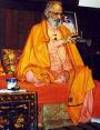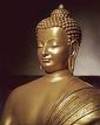Outline of the World’s Major Non Christian Religions
Since much of the world’s turmoil is related to religious belief’s, a working idea of some of the non-Christian major religions is helpful. Christianity, with it’s many divisions and sects, has about 2.1 Billion believers world wide, but the other major religions have a comparable number of members world wide as well. What follows is a very brief and sketchy outline which is not intended to be complete.
There are roughly 1.4 Billion people who follow the religion of Islam, countries such as Iran, Iraq, Eygpt, Pakistan, Saudi Arabia and Indonesia are Islamic. Indonesia has the world's largest number of believers, 88% of the country of 228 million people. Islam is today it is the fastest growing religion in the world. This religion is based upon the teachings of Muhammad in the 7th Century AD. About 83% are Sunnite or  traditionalists and the rest Shiites. The Shiites separated from the main mass of Islam because of dissatisfaction over what they saw as the increasing worldliness of Islam teachings. They might very loosely be compared to the reason for the Protestant movement. They are generally considered a traditional conservative sect of Islam. The majority of the world’s Muslims are Sunnite and regard their sect as the mainstream and traditionalist branch of Islam. They see Muhammad as the last in a series of prophets going back to Moses. In fact, Arabs today use the language of Muhammad more then 1,300 years after his death. Their Koran describes Jesus virgin birth, but they do not believe he was Devine, but rather a prophet. They believe in a single God, Allah. In addition to the Koran, there is the Sunna or a body of teachings from tradition which is regarded as valid. They follow strict dietary laws and the five pillars of the faith: the profession of faith, praying five times a day, charity for the poor, doing penance through fasting during the holy month of Ramadan and making a pilgrimage to Mecca during one’s life. A Muslim is defined as a person who practices Islam.
traditionalists and the rest Shiites. The Shiites separated from the main mass of Islam because of dissatisfaction over what they saw as the increasing worldliness of Islam teachings. They might very loosely be compared to the reason for the Protestant movement. They are generally considered a traditional conservative sect of Islam. The majority of the world’s Muslims are Sunnite and regard their sect as the mainstream and traditionalist branch of Islam. They see Muhammad as the last in a series of prophets going back to Moses. In fact, Arabs today use the language of Muhammad more then 1,300 years after his death. Their Koran describes Jesus virgin birth, but they do not believe he was Devine, but rather a prophet. They believe in a single God, Allah. In addition to the Koran, there is the Sunna or a body of teachings from tradition which is regarded as valid. They follow strict dietary laws and the five pillars of the faith: the profession of faith, praying five times a day, charity for the poor, doing penance through fasting during the holy month of Ramadan and making a pilgrimage to Mecca during one’s life. A Muslim is defined as a person who practices Islam.
Hind uism has some 900 million followers around the world and dates from 1500 B.C. starting in India which is about 82% Hindu. Essentially, it is a religion which believes the individual should be attached to Brahman (or Godhead) who is the spiritual head of the universe. They believe in reincarnation, the form of one's rebirth depending upon your actions, Karma, and duties, Dharma, during life. There are many branches of thought within this religion, but generally they have a deep respect for all living things and do not eat meat. Unlike Islam which involves group worship, Hinduism is essentially an individual worship.
uism has some 900 million followers around the world and dates from 1500 B.C. starting in India which is about 82% Hindu. Essentially, it is a religion which believes the individual should be attached to Brahman (or Godhead) who is the spiritual head of the universe. They believe in reincarnation, the form of one's rebirth depending upon your actions, Karma, and duties, Dharma, during life. There are many branches of thought within this religion, but generally they have a deep respect for all living things and do not eat meat. Unlike Islam which involves group worship, Hinduism is essentially an individual worship.
Buddhism also began in India based upon the teachings of Siddhartha Gautama known as the Buddha or Enlightened One and has about 376 million members around the world. This religion is based upon four noble truths: Life is temporary and produces suffering; suffering is caused by wrong attachments; suffering is  overcome through overcoming ignorance and attachments and the way to end suffering is through the Path of right views. These consist of intentions, speech, action, likelihood, effort, right mindedness and contemplation. There are three major branches to this religion. The main sects are Theravada or Hinayana and Mahayana. The latter group represent about 56% of all Buddhist. Zen Buddhism is a branch which teaches enlightentenment through meditation The Dalai Lama is the spiritual head of the Tibetan Buddhists. They do not believe in an all powerful God nor accept the existence of an individual soul, but teach that the revealed religions of the world are actually in agreement.
overcome through overcoming ignorance and attachments and the way to end suffering is through the Path of right views. These consist of intentions, speech, action, likelihood, effort, right mindedness and contemplation. There are three major branches to this religion. The main sects are Theravada or Hinayana and Mahayana. The latter group represent about 56% of all Buddhist. Zen Buddhism is a branch which teaches enlightentenment through meditation The Dalai Lama is the spiritual head of the Tibetan Buddhists. They do not believe in an all powerful God nor accept the existence of an individual soul, but teach that the revealed religions of the world are actually in agreement.
Shinto is an ancient Japanese religion which is believed to date from about 500 B.C. About 84% of the Japanese people follow either Buddhism or Shinto religions. Shintoist follow a code of Confucianism where ancestors are deeply revered, all human life is sacred and emphasize right practice, sensibility, and attitude.
Taoism is difficult to define, but is followed by a substantial number of people in China. Toa is seen as the natural way of the universe and the order behind all of life. Taoist's believe the natural order of things cannot be understood or explained. It can only be known through meditation and contemplation. Taoism co-operates with nature and natural forces. Dialectic Taoism sees an relationship between opposites: the Yin and Yang are negative and positive principles of the universe. One cannot exist without the other. Balance is essential in life.
Judaism is the oldest of the world’s three monotheistic religions and predates Christianity and Islam and has approximately 14 million members world wide. It originated in Israel (Palestine) in the middle East when God spoke to Abraham. The Jews believe God, Yahweh, made an agreement (covenant) with the Jews, who are chosen people, that he would protect them and give them a land to live in if they followed his rules and  commandments. There are roughly three divisions within the religion as practiced: Reform Judaism, Conservative Judaism and Orthodox Judaism. Reform Judaism has a much more liberal view then Orthodox of the requirements of the rules. Conservative Judaism, organized in 1913, believe in adapting while remaining faithful to basic rules. Orthodox Judaism, made up of several groups, and more strictly follow the Torah as the rule of religion. The Torah consist of the first five books of the Bible: Genesis, Exodus, Leviticus, Numbers and Deuteronomy.
commandments. There are roughly three divisions within the religion as practiced: Reform Judaism, Conservative Judaism and Orthodox Judaism. Reform Judaism has a much more liberal view then Orthodox of the requirements of the rules. Conservative Judaism, organized in 1913, believe in adapting while remaining faithful to basic rules. Orthodox Judaism, made up of several groups, and more strictly follow the Torah as the rule of religion. The Torah consist of the first five books of the Bible: Genesis, Exodus, Leviticus, Numbers and Deuteronomy.
At the time of Christ the main sects were the: Sadducees, the pharisees and the Essenes. The most important of the three were the Pharisees because they are seen as the spiritual fathers of modern Judaism. They accepted oral tradition regarding the law as well as the books of the Torah. The Sadducees were elitists, but pragmatic and willing to incorporate Hellenism, which the Pharisees opposed. They also denied the immortality of the soul, the existence of spirits or angels and any afterlife. They were strict interpreters of the law. They disappeared about 70 A.D. The Essences believed the other two groups had corrupted the Temple and moved to the desert to follow a monastic life with strict dietary laws and celibacy. They were probably connected to the group living in Qumran, near the dead sea, where, in 1947, the Dead Sea Scrolls were discovered.
The name Zionism, is derived from one of the names of Jerusalem, mentioned in the Bible. It refers to the desire of the Jews to occupy their ancestral homeland as defined in the Bible.
What's interesting about world wide conflict between Islam and Judasim, is the fact that they are joined in faith through a common founder. Abraham is regarded as the founding patriarch of the three major religions: Christianity, Judasim and Islam. Abram was brought by God from the ancient city of Ur into Canaan where he makes a covenant with God and is renamed Abraham by God. For a book regarding the connection of these faiths through Abraham, see Abraham: A Journey to the Heart of Three Faiths by Bruce Feiler.
